Last Updated on February 28, 2024 by Laura Teso
Pizza marinara, spaghetti al pomodoro, pasta e fagioli… Italy is home to numerous dishes that are traditionally vegan. As I recently decided to add more vegan meals to my diet, I think it would also be interesting for you to discover some Vegan Italian recipes. Whether you’re looking to try these dishes at home or plan to visit Italy soon and want to know your vegan options, here is a list of some of the most famous and common Italian vegan recipes.
Vegan Italian Recipes: From Appetizers to Desserts
Appetizers and Snacks
Let’s begin with some appetizers or snacks.
Bruschetta
Bruschetta is a quintessential Italian antipasto appetizer, featuring grilled bread rubbed with garlic and topped with olive oil and salt. It’s one of the most beloved appetizers in Italy, and you can find a variety of toppings, both vegan and non-vegan. Common variations include toppings of tomato, vegetables, beans, cured meats, or cheese. Note: The correct pronunciation is brʊˈskɛtə (IPA). The ‘che’ sounds like in the name Kelly, mi raccomando!
Taralli
Taralli are delightful ring-shaped snacks, originally from the Apulia region, but you can find them in supermarkets across Italy and often served in restaurant bread baskets. Their texture resembles that of a wheat-based cracker—crunchy and crisp. The primary ingredients include flour, olive oil, white wine, and salt. There are also variations, often featuring additions like fennel seeds, black pepper, onion, and chilis, so it’s best to check the ingredients before purchasing. A sweet version exists too, made with sugar and sometimes almonds.
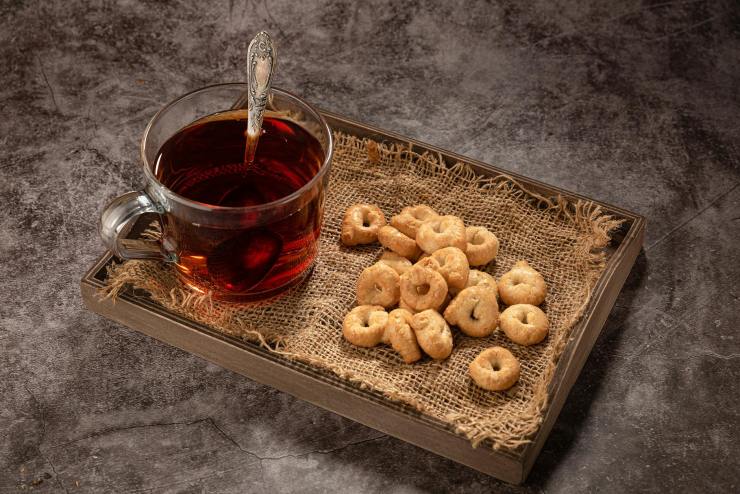
Vegan Italian Pasta Recipes
In Italy, the most common way to enjoy vegan pasta is by pairing it with vegetables that are cut into small pieces and cooked. Sometimes, a portion or all of the veggies can be blended to create a creamy sauce. You can use seasonal vegetables like zucchini, eggplants, and broccoli. Among the many options available, here are four of the most popular vegan Italian pasta recipes:
Pasta al Pomodoro
The classic dish is spaghetti al pomodoro, although any pasta can be used. I personally enjoy using mezze penne rigate. This dish is very easy to prepare: simply warm the tomato sauce or fresh tomatoes. Alternatively, you can make a soffritto di cipolle o misto, which consists of sautéed onions or a mix of vegetables (onion, carrot, celery) before adding the tomato sauce.
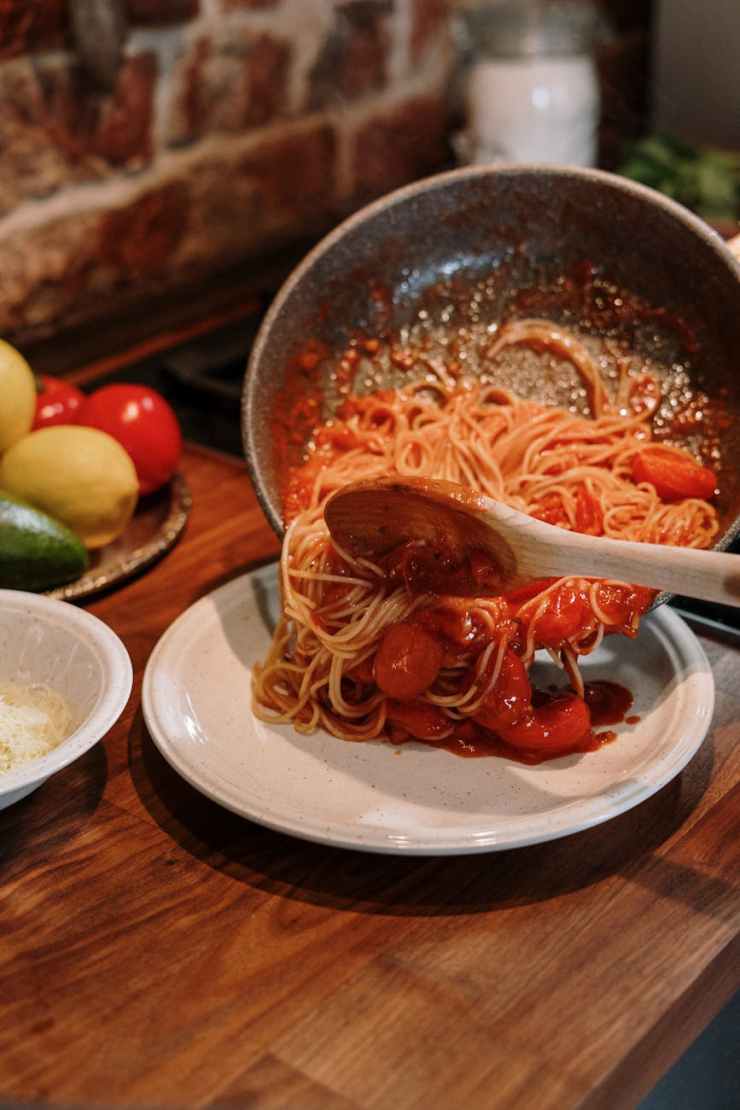
Spaghetti Aglio Olio Peperoncino
Aglio olio e peperoncino translates to garlic, oil, and chili. This traditional Italian pasta dish is usually served as a first course and can be made with different types of pasta, though spaghetti is the traditional choice. To prepare it, cook the pasta as per package instructions. In a large skillet, heat olive oil over medium heat, add garlic and chili peppers, and sauté until fragrant, about a minute. Then toss in the cooked pasta, coating it well with the oil and garlic, and season with salt and pepper.
Orecchiette alle Cime di Rapa – Turnip Greens Pasta
This dish, originating from the Puglia region, combines orecchiette, a type of small, ear-shaped pasta, with cime di rapa, also known as broccoli rabe or turnip greens. Using fresh cime di rapa is best, but frozen works too. The recipe is typically seasoned with garlic, olive oil, and chili peppers. Note: some versions may include anchovies for extra flavor, but it remains delicious even without them.
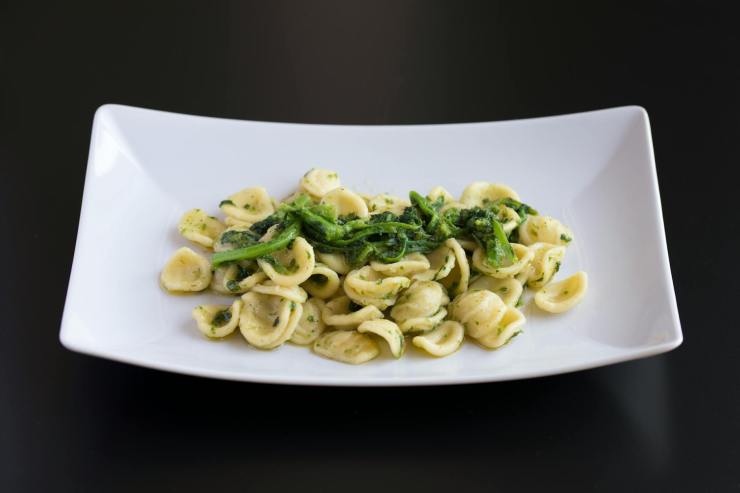
Risotto
Similar to pasta, delicious risottos can be made vegan as well. For example, risotto with radicchio is a classic dish that can easily be made vegan by omitting butter and cheese. Other popular variations include risotto with asparagus, zucchini, mushrooms, and squash. However, I’d like to shine a spotlight on a traditional recipe from my region, Veneto, which is known as risi e bisi.
Risi e Bisi – Peas Risotto
Risi e bisi, a classic Venetian dish, features rice and peas and is best prepared in spring when fresh peas are available. It can also be made with frozen peas. This simple yet flavorful dish is generally served as a first course. While some people like to add pancetta for extra flavor, I prefer to keep it simple. It’s typically accompanied by grated Parmesan, which can be omitted for a vegan version.
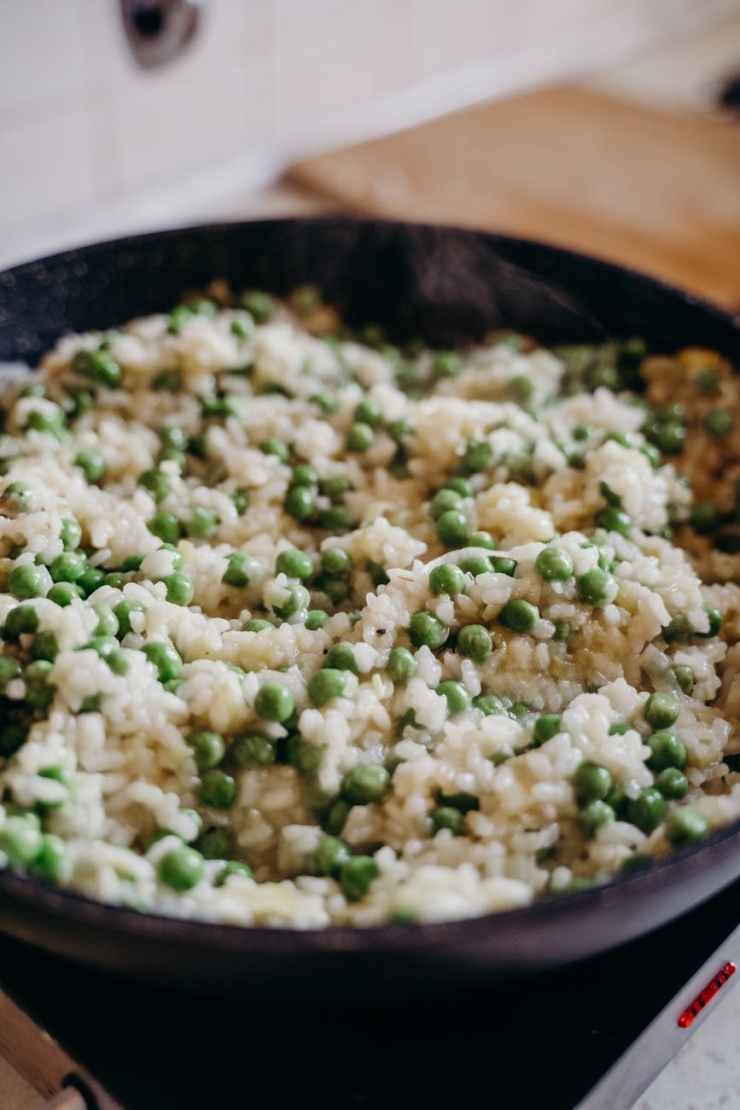
Vegan Italian Soups
Zuppa di Lenticchie – Lentil Soup
Known as “lentil soup,” zuppa di lenticchie is a hearty Italian dish enjoyed especially in the colder months. Lentils are the main ingredient, complemented by vegetable broth made from carrots, onions, and celery. Some recipes may also include potatoes, tomatoes, and herbs to enhance flavor and texture. Don’t forget to add a couple of bay leaves to aid in the digestion of lentils.
Zuppa d’Orzo – Barley Soup
This Italian barley soup is filling and comforting, often enjoyed during the colder months. In some regions like Alto Adige, it is traditionally made with smoked meats like speck for a distinctive flavor. However, you can omit these ingredients while still retaining a delicious soup: Italian barley soup.
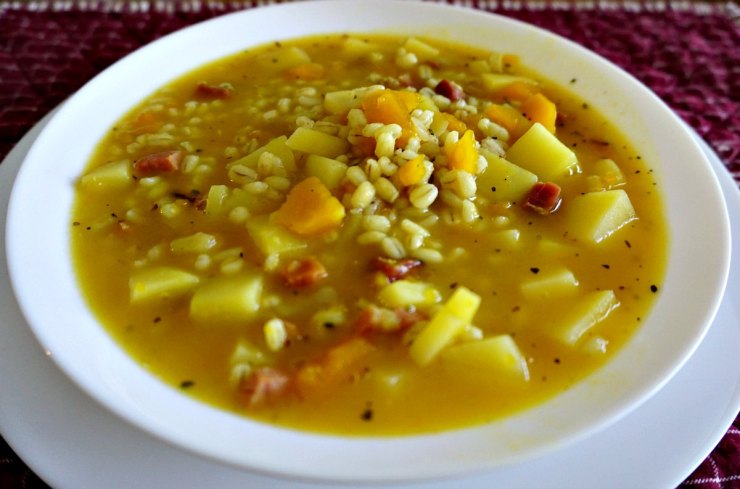
Minestrone
In Italy, soup is known as minestra. Minestrone, meaning “big soup,” is characterized by its multitude of ingredients, featuring various vegetables and legumes. Sometimes small pasta or rice is added, or bread can accompany the dish once it’s ready. Primarily an autumn-winter dish, minestrone can also be enjoyed cold or lightly warmed in the spring or summer.
Pasta e Fagioli
This classic Italian soup, translating to “pasta and beans,” is hearty and popular in my region during winter. Note: Some cooks add prosciutto or other meats, so be sure to inquire before ordering if you are vegan. Typically, it’s prepared with vegetable broth (onions, carrots, celery), bay leaves, salt, pepper, herbs, beans (usually the borlotti variety), and, of course, pasta (ditalini is most common). Here’s my recipe for pasta with beans.
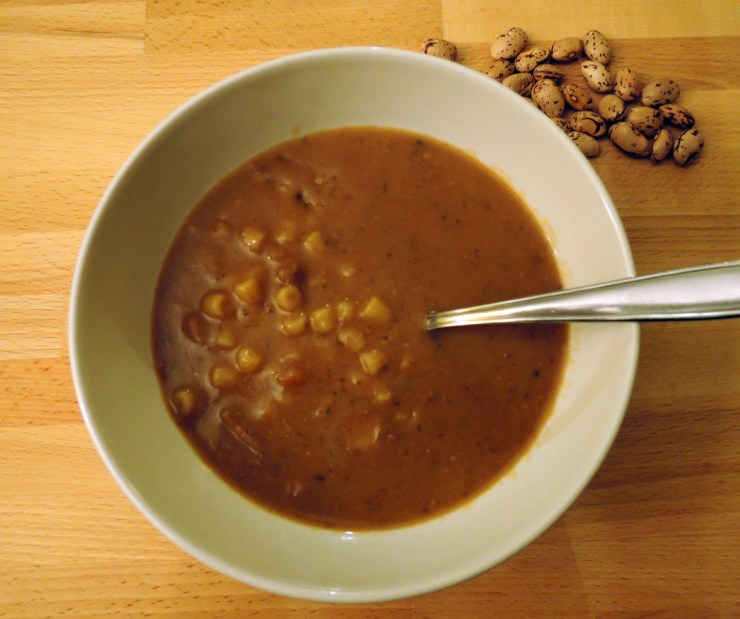
Ribollita
Hailing from the Tuscany region, ribollita is a soup that prominently features stale bread. Vegetables play a crucial role in flavoring the dish: kale, cannellini beans, carrots, and onions. Other vegetables like celery or potatoes may be added depending on the specific recipe. Ingredients such as garlic, bay leaves, salt, pepper, and sometimes herbs like rosemary or thyme contribute to the flavor. Ribollita literally means “re-boiled” because the dish was traditionally prepared in large quantities and reheated for subsequent meals.
Single Dishes
Panzanella
Panzanella is a rustic chopped salad originating from the Tuscan and Umbrian regions. It represents a quintessential summer dish filled with fresh flavors and textures. The main component is stale bread, which is typically soaked in water and then squeezed dry. Diced tomatoes, red onions, and cucumbers form a refreshing base, enhanced with basil leaves. A simple dressing, usually made from olive oil, vinegar, salt, and pepper, brings all the elements together.
Pappa al Pomodoro
Translating to “tomato mush”, pappa al pomodoro is a thick Tuscan cold soup made primarily from ripe tomatoes that are simmered until softened and broken down. Stale bread is added to absorb the rich tomato sauce, giving it a unique texture. The dish is further enhanced with garlic and fresh basil for aromatic depth, and olive oil adds richness. Finally, salt and pepper balance the flavors, creating a delightful blend of savory and slightly sweet notes.
Fave e Cicoria
Fave e cicoria translates to broad beans and chicory. It’s a classic yet simple dish from Puglia. The beans are usually soaked and then simmered until tender, creating a creamy and flavorful base. The slightly bitter, earthy taste of the chicory greens, whether wild or cultivated, perfectly complements the sweetness of the fava beans. Olive oil, a staple in Italian cuisine, adds depth, while salt and pepper finish the seasoning.
Side Dishes
Caponata
An extraordinary dish from Sicily, caponata features a blend of fried vegetables, primarily eggplant, enveloped in a sweet and sour sauce. Eggplant typically takes center stage, providing a soft, slightly sweet base, complemented by vegetables like celery, onions, and bell peppers. Further enhancing its complexity are tomatoes, olives, and capers, all brought together by the sweet and sour sauce made from tomato sauce, olive oil, vinegar, and sugar. Occasionally, raisins or pine nuts add a delightful sweetness.
Polenta
Polenta, made from boiled cornmeal, has its origins in northern Italy. While it can be paired with fish, meat, cold cuts, cheese, beans, or lentils, one of the most popular options in the mountainous regions of Italy is polenta e funghi, or polenta with mushrooms.
Polenta e Funghi
This comforting dish marries the creamy texture of polenta with the earthy flavors of mushrooms. Various types of mushrooms can be used, sautéed with garlic, olive oil, and sometimes herbs to infuse them with rich aromas and bring out their natural umami flavors.
Pizza and Focaccia: Italian Vegan Recipes
Farinata
Also known as cecìna, farinata is a thin, savory pancake originating from the northwest coast of Italy. This simple dish packs a flavorful punch thanks to its few ingredients. The main ingredient, chickpea flour, is mixed with water, olive oil, and a pinch of salt. The batter is then cooked in a hot pan or oven until it forms a crispy golden crust with a soft, slightly custardy center. You can enjoy it plain or topped with vegetables, herbs, or even cheese.
Focaccia
Focaccia is a beloved Italian flatbread known for its slightly crisp crust and soft, airy inside. The base consists of simple dough made with flour, water, yeast, and olive oil. Unlike pizza dough, focaccia is drizzled generously with olive oil before baking, creating its signature dimpled surface. This not only adds richness but enhances the crispness of the crust while keeping the interior soft and fluffy. Focaccia is native to Liguria and Puglia, but it can be found in bakeries throughout Italy. The traditional recipes are vegan, with one being plain and the other originating from Apulia, which includes cherry tomatoes. Variations with different toppings are also commonly available.
Pizza Marinara
While most pizzas are topped with mozzarella, don’t worry if you avoid dairy. You can find pizze rosse, or red pizzas, which do not include mozzarella. The most common of these is marinara pizza, featuring a simple topping of tomato sauce, garlic, oregano, and extra virgin olive oil.
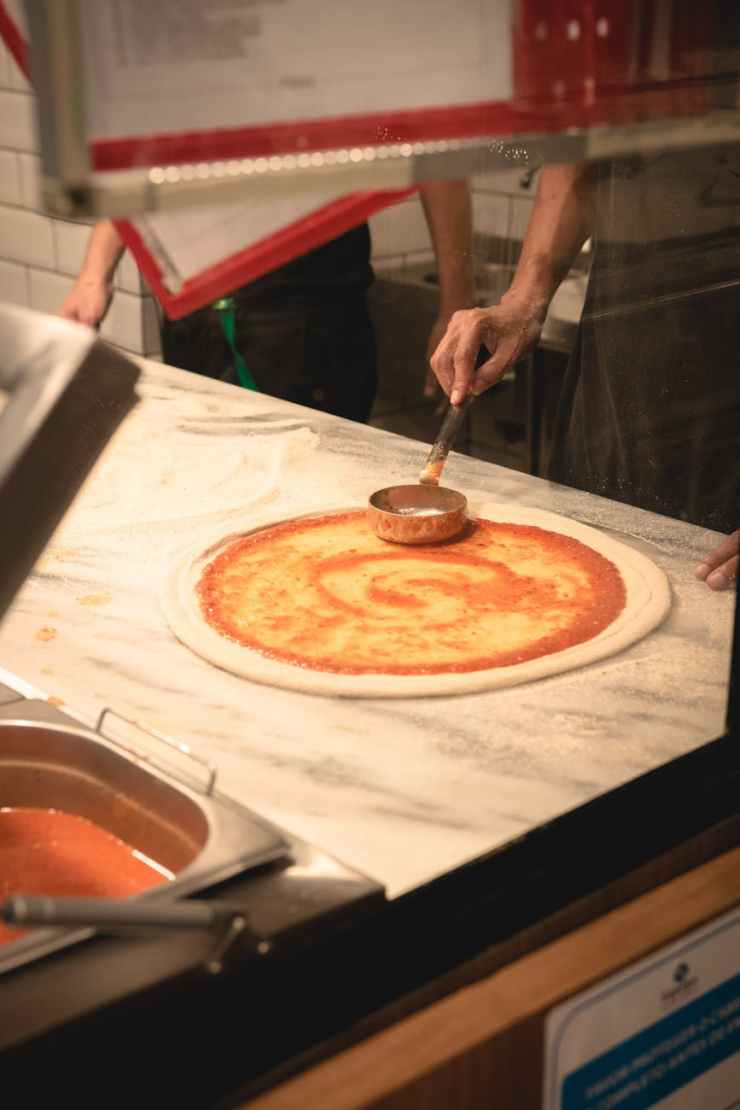
Cakes
Castagnaccio
Returning to Tuscany, we find castagnaccio—a simple Tuscan cake made primarily with chestnut flour, traditionally enjoyed in the autumn. Common additions include pine nuts and raisins, which contribute sweetness and texture. Some variations might include rosemary, orange rind, fennel seeds, or dried fruits (figs, apricots).
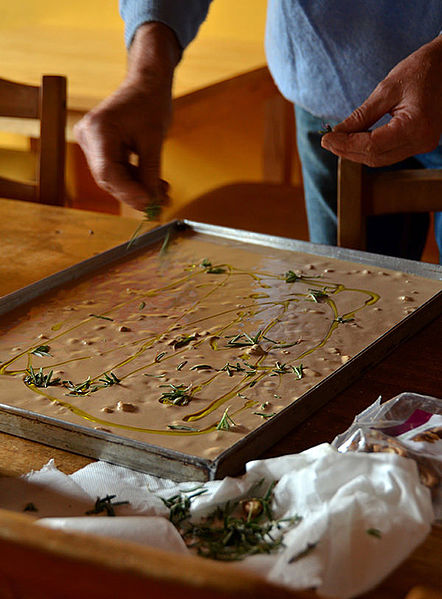
How did you like my list of vegan Italian recipes? Did you already know them all?
This rewrite ensures that the content remains engaging and informative while improving the overall clarity and quality of the language used.



